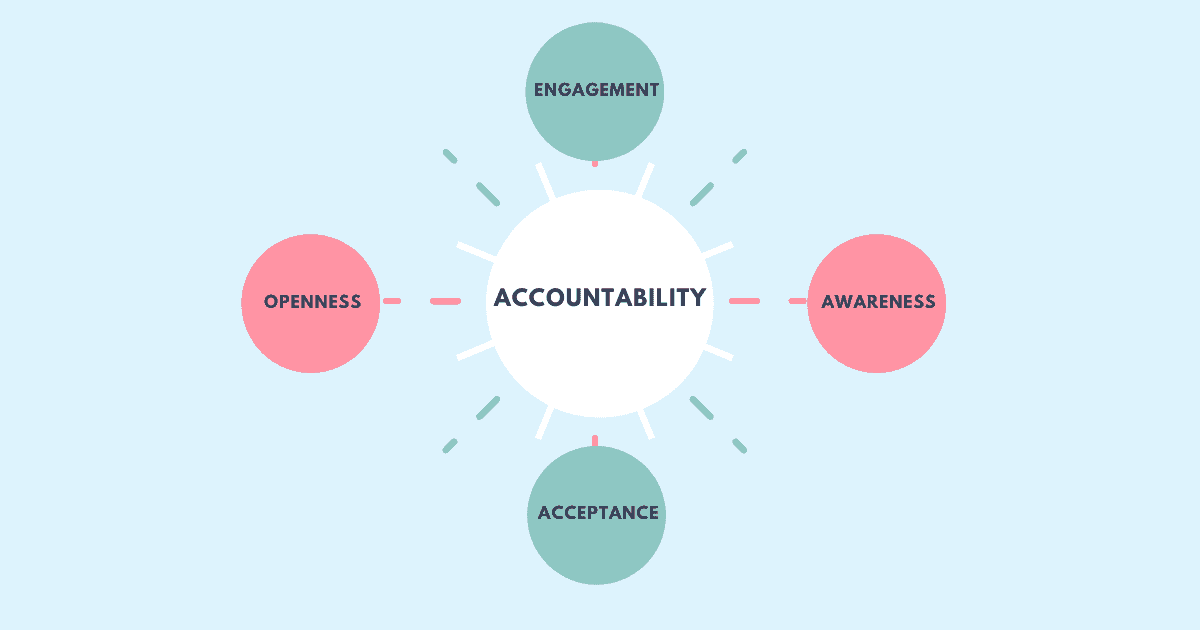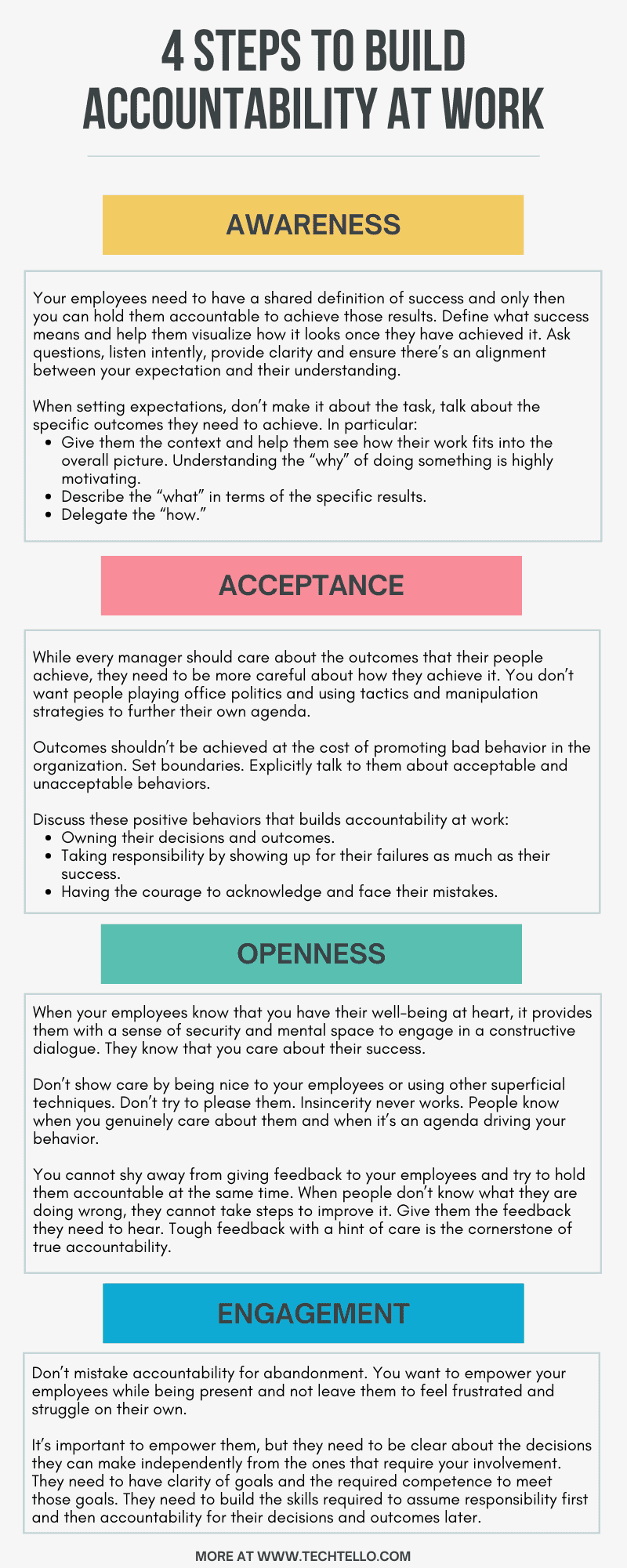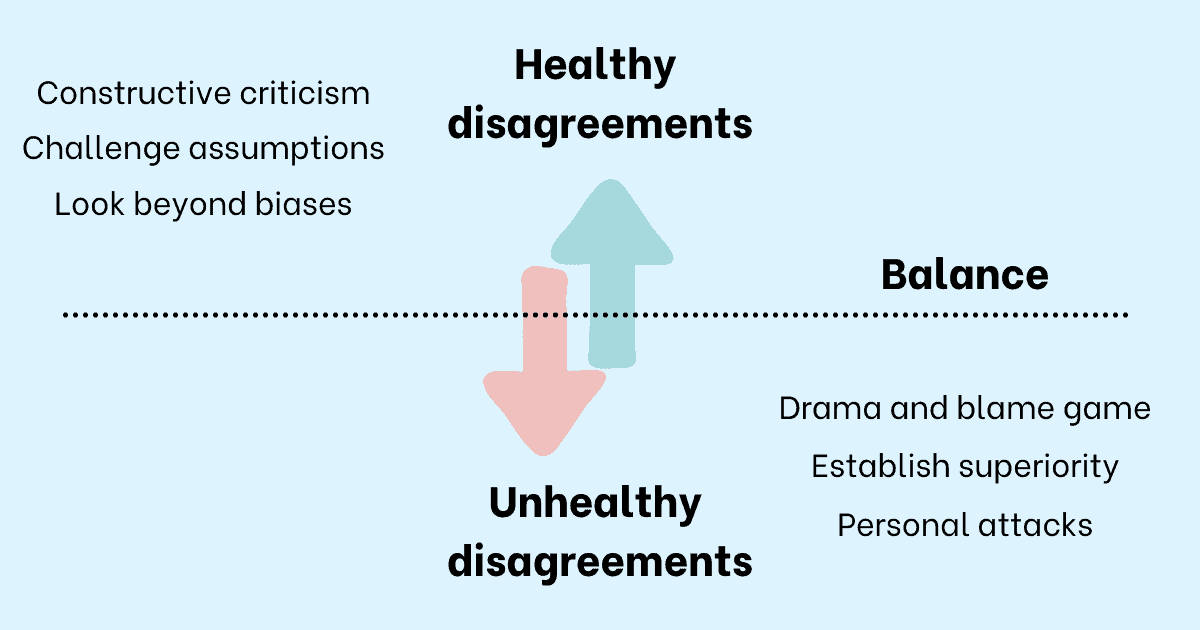The Fine Balance Between Caring for People and Holding them Accountable at Work

I have been a people person as far as I could remember. So when I first became a manager, I thought “How hard could this be?”
Boy, was I wrong! Being a manager was not only tough. It was an emotional experience. It was nothing like I had imagined and far better than what I hoped it would turn out to be. Initial days were filled with trial and error, mistakes and learnings. I made decisions that I regretted later. I felt stupid about passing certain remarks. I bombed presentations. I screwed up feedback. Every success was thrilling and every failure, though downright upsetting and disappointing turned out to be a huge learning lesson down the line.
While I learnt many things, my biggest learning was this – caring for your people and holding them accountable for their work aren’t mutually exclusive. You don’t need to be nice and kind to people to show them you care. And caring for them doesn’t mean you don’t care about the outcomes.
“When setting expectations, no matter what has been said or written, if substandard performance is accepted and no one is held accountable—if there are no consequences—that poor performance becomes the new standard” ― Jocko Willink, Extreme Ownership
In theory, it sounds good. When put in practice though, it does require a lot of self-awareness and commitment to set things right:
- Going against the instincts that naturally incline towards the safe and easy path by avoiding difficult conversations to embracing the uncomfortable moments.
- Making decisions based on what’s right and wrong without fear of losing approval.
- Being willing to be vulnerable to the effects of your people’s decisions.
- Choosing not to end the drama on the spot by saying nice things or saving their feelings, but actually helping them see the reality of their situation.
Most importantly, it requires helping your employees differentiate between taking responsibility and showing accountability.
Holding people accountable at work
Accountability isn’t built by telling people what to do and then assuming others will simply do their job. There are multiple dynamics in the work environment involving you and others that can interfere with your desire to build accountability within your team.
To build accountability at work you need to:
- Build awareness of the measure of accountability by setting clear expectations and aligning on those expectations.
- Create acceptance around behaviors and actions that demonstrate accountability.
- Communicate that you care while showing the openness to be candid.
- Engage with them by acting as their support structure.
Accountability = fn (Awareness, Acceptance, Openness, Engagement)
Start Stop Continue Worksheet
Reflect on past experiences and create a list of concrete actions to improve using this template.
1. Awareness – Start with defining success
Your employees need to have a shared definition of success and only then you can hold them accountable to achieve those results. Define what success means and help them visualize how it looks once they have achieved it. Ask questions, listen intently, provide clarity and ensure there’s an alignment between your expectation and their understanding.
Be consciously aware that everything you say is subject to interpretation and take steps to reduce the gap between “what you say” and “what they perceive.” Remember good communication isn’t about how well you say something, it’s about how well the other person receives it.
When setting expectations, don’t make it about the task, talk about the specific outcomes they need to achieve. In particular:
- Give them the context and help them see how their work fits into the overall picture. Understanding the “why” of doing something is highly motivating.
- Describe the “what” in terms of the specific results.
- Delegate the “how.”
When you define the “how” as well, you can only hold your people responsible for executing your instructions. You cannot hold them accountable for results. By delegating the how, you communicate that they are not only accountable for what they do, but also for what they do not do. You empower them to experiment, strategize and execute in their own way while keeping an eye on the same end goal. It’s knowing the difference between doing only what they are being asked to do and doing everything possible to make things work.
As Julie Zhuo says in The Making of a Manager “The best outcomes come from inspiring people to action, not telling them what to do.”
2. Acceptance – Explicitly talk about positive behaviors
While every manager should care about the outcomes that their people achieve, they need to be more careful about how they achieve it. You don’t want people playing office politics and using tactics and manipulation strategies to further their own agenda.
Outcomes shouldn’t be achieved at the cost of promoting bad behavior in the organization. Set boundaries. Explicitly talk to them about acceptable and unacceptable behaviors. Give them examples to help them understand what true accountability means.
Discuss these positive behaviors that builds accountability at work:
- Owning their decisions and outcomes.
- Taking responsibility by showing up for their failures as much as their success.
- Having the courage to acknowledge and face their mistakes.
- Saving time and energy by bringing things out in the open and using that energy to make things better for themselves and others.
Discuss these unacceptable behaviors that risks accountability:
- Blaming others for not achieving a certain goal.
- Making excuses that don’t add up.
- Covering up mistakes by hiding details or falsifying events.
- Taking undue credit.
- Toxic behaviors like people pleasing, bullying or putting other people down.
3. Openness – Show them you care
When your employees know that you have their well-being at heart, it provides them with a sense of security and mental space to engage in a constructive dialogue. They know you mean no harm. They know that you care about their success. They don’t doubt your intention.
However, when they don’t trust you, they are suspicious of everything you say or do. The agenda you determine, the direction you decide, the advice you provide, the information you share, everything is met with resistance and judgment.
Don’t show care by being nice to your employees or using other superficial techniques. Don’t try to please them. Insincerity never works. People know when you genuinely care about them and when it’s an agenda driving your behavior.
You cannot shy away from giving feedback to your employees and try to hold them accountable at the same time. When people don’t know what they are doing wrong, they cannot take steps to improve it. Give them the feedback they need to hear. Tough feedback with a hint of care is the cornerstone of true accountability. Don’t criticize when others are around. Use private discussions to turn them around.
It is what Kim Scott describes in Radical Candor as care personally, but challenge directly.
4. Engagement – Act as a support structure
Finally, don’t mistake accountability for abandonment. You want to empower your employees while being present and not leave them to feel frustrated and struggle on their own.
It’s important to empower them, but they need to be clear about the decisions they can make independently from the ones that require your involvement. They need to have clarity of goals and the required competence to meet those goals. They need to build the skills required to assume responsibility first and then accountability for their decisions and outcomes later.
As a manager, you need to coach them and guide them throughout the process. When struggling with meeting a deadline, ask them about the strategies they can use to get back on track. When having difficulties collaborating with other team members, ask them about the specific challenges they are facing. When they fail to meet your expectations, talk to them about their learnings and the changes they can make next time around.
Accountability isn’t one thing. It’s a set of behaviors that you and your team members both need to practice for a lifetime. If you are finding it hard to build accountability within your team, ask yourself which of these steps might be missing – is your team aligned on expectations, do they understand what accountability truly means, do they trust you with feedback to help them improve and finally are you present to help them around.
Summary
- Caring for people and holding them accountable aren’t mutually exclusive. You can care personally while expecting your team to own their decisions and their outcomes.
- Accountability = fn (Awareness, Acceptance, Openness, Engagement).
- Awareness: Have a common definition of success and align on what someone is being held accountable for.
- Acceptance: Discuss positive behaviors that build accountability and ask them to refrain from engaging in behaviors that risk it.
- Openness: Layer your care with a dose of tough feedback. Don’t shy away from telling people what they need to hear. Accountability is built with corrections.
- Engagement: Act as a solid support structure to enable your team to build the skills required to feel confident in their decisions and own their outcomes.






























